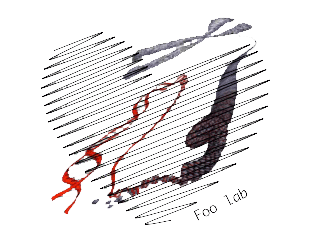
Zhao Rong Rong
PhD
Senior Research Fellow
PhD
Senior Research Fellow
Email: mdczr@nus.edu.sg
My research interest is focused on developing novel treatment for cardiovascular diseases (CVDs) by in-depth understanding of the roles of extracellular matrix (ECM) components in disease developments. In particular, I’m interested in a group of ECM molecule, glycosaminoglycans, which are highly-charged unbranched polysaccharides comprises mainly chondroitin sulfate (CS) and heparan sulfate (HS).
GAGs were identified to accumulate in patients with mucopolysaccharidosis (MPS), where a myriad of symptoms were found in the cardiovascular system. My previous study identified that in non-MPS patients with heart failure, CS accumulated in fibrotic cardiac tissue. Using an FDA approved drug for MPS patients, we discovered modifying CS in vivo was effective in preventing as well as reducing fibrosis and inflammation in rodent models of HF. These studies suggested CS is a novel target for treating CVDs.
Our latest investigation discovered that eliminating one of the CS synthase genes in vivo abolished all signs of coronary artery remodeling in mice with hypertension. Since blood vessel remodeling is the underlying cause of many CVDs, these results inspired strong interest in further pursing the research about the role of CS in blood vessel pathology. My goal is to develop novel therapeutics for reversing vascular remodeling, to prevent or rescue the subsequent CVDs such as hypertension and heart failure by targeting the CS pathway.
Honors & Awards
Education
Ph.D. Clinical Neuroscience, Trinity College, University of Cambridge, UK (2014)
B.Sc, BioEngineering, Nanyang Technological University of Singapore (2008)
Awards
- Young Investigator Award, 1st prize, Singapore Cardiac Society 2016
- Young Investigator Award, 2nd prize, ASEAN Federation of Cardiology 2016
- Poster prize at Gordon Research Conference, International Proteoglycan Meeting 2016
- Invited Speaker at German University Medical Center Hamburg-Eppendorf 2018
Skills
Publications
- Zhao R-R, Ackers-Johnson M; etc. “Targeting chondroitin sulphate glycosaminoglycans inhibits pathological cardiac remodelling” (2018) Circulation
- Stenzig J, Loser A, Peter BS, Schaefer A, Zhao R-R, etc. “Pharmacological inhibition of DNA methylation attenuates pressure overload-induced cardiac hypertrophy in rats.” (2018) Journal of molecular and Cellular Cardiology
- Franssen E*; Zhao R-R*; etc. “Manipulation of motor-cargo adaptor proteins and microtubule modification enable integrin transportation down axons.” (2015)Journal of Neuroscience * Shared-first author
- Zhao R-R; Andrews MR; etc. “Combination treatment with anti-Nogo A and Chondroitinase ABC is more effective than single treatments at enhancing functional recovery after spinal cord injury.” (2013) European Journal of Neuroscience
- Zhao R-R; Fawcett JW. “Combination treatment with Chondroitinase ABC in spinal cord injury— breaking the barrier.” (2013) Neuroscience Bulletin
- Zhao R-R; Muir EM; etc. “Lentiviral vectors express chondroitinase ABC in cortical projections and promote sprouting of injured corticospinal axons.” (2013) Journal of Neuroscience Methods
- Tan C.L.; Kwok J.C.; Zhao R-R; Eva R; Fawcett JW. “Full length talin stimulates integrin activation and axon regeneration.” (2015) Molecular and cellular neuroscience
- Heintz T; Heller J; Zhao R-R; Eva R; Fawcett JW. “Kinesin KIF4A transports integrin beta1 in developing axons of cortical neurons.” (2014) Molecular and cellular neuroscience
- Kwok JCF; Heller J; Zhao R-R; Fawcett JW. “Targeting inhibitory chondroitin sulphate proteoglycans to promote plasticity after injury.” (2013) Methods in Molecular Biology
- Wang DF; Ichiyama RM; Zhao R-R; etc. “Chondroitinase combined with rehabilitation promotes recovery of forelimb function in rats with chronic spinal cord injury.” (2011) Journal of Neuroscience
Ongoing Projects
Exploring the role of extracellular molecules, especially chondroitin sulfate, in heart failure, perivascular fibrosis, and atherosclerosis
